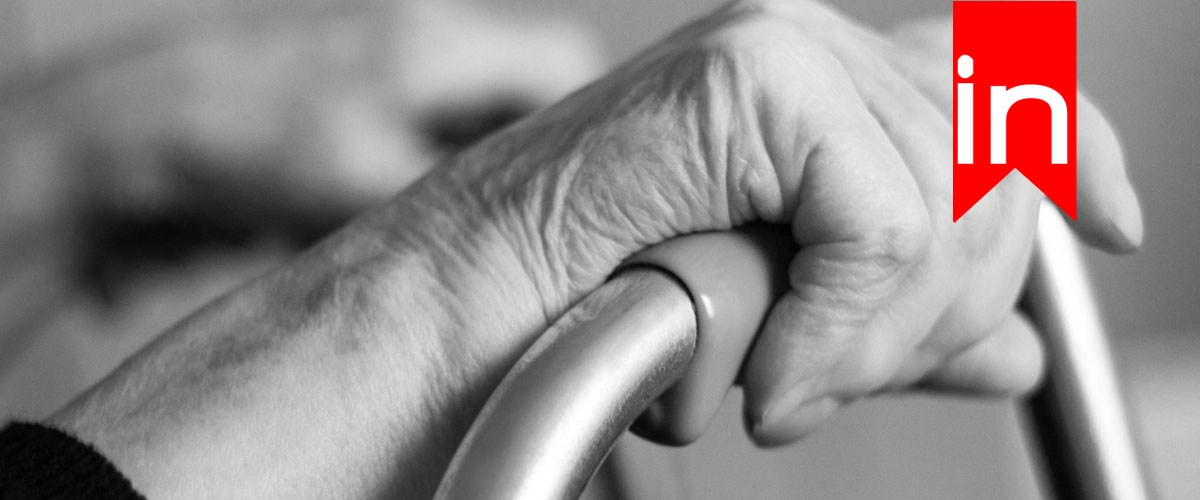Muscle atrophy is the loss of muscle mass and strength that can occur due to various factors such as disuse, aging, malnutrition, or underlying medical conditions. It can also happen naturally as we age. Muscle loss in seniors, also known as age-related muscle atrophy, is a common condition that occurs as a result of the natural aging process. It involves the breakdown of muscle proteins and a decrease in muscle fiber size, leading to a decline in overall muscle function and can lose muscle mass.
Highlights
- Exploring the causes and consequences of muscle loss in seniors, including reduced strength, increased fall risk, and metabolic decline.
- Factors contributing to aging-related muscle atrophy, such as sedentary lifestyle, inadequate nutrition, hormonal changes, and medical conditions.
- Recommending regular exercise, balanced nutrition, hydration, hormonal balance, medication review, and social support to mitigate muscle loss and improve overall health in seniors.
Aging muscle loss is particularly relevant for the elderly population, as it can have several consequences on their health and quality of life:
- Reduced strength and mobility: As muscle strength and mass decrease, older adults may find it more difficult to perform daily activities, such as walking, climbing stairs, or carrying groceries. This can limit their independence and increase the risk of falls and fractures.
- Increased risk of falls and injuries: With weaker muscles, elderly individuals are more prone to losing balance and falling, which can lead to serious injuries, such as fractures and head trauma.
- Decline in metabolic health: Muscle tissue plays a critical role in regulating metabolism. Loss of muscle mass can lead to a decrease in resting metabolic rate, which may contribute to obesity, insulin resistance, and an increased risk of developing chronic diseases, such as type 2 diabetes or cardiovascular disease.
- Sarcopenia: Age-related muscle atrophy can progress to sarcopenia, a more severe condition characterized by significant loss of muscle mass and function. Sarcopenia can have a profound impact on the elderly, leading to disability, a higher risk of falls, and reduced overall quality of life.
To mitigate the effects of muscle atrophy in the elderly, it is essential to encourage regular physical activity, especially strength and resistance training exercises. Maintaining a balanced diet with adequate protein intake and proper nutrition can also help preserve muscle mass and function. In some cases, healthcare professionals may recommend specific interventions, such as physical therapy, to address muscle atrophy in older adults.
Causes Of Aging Muscle Loss
The process of aging naturally contributes to muscle atrophy in seniors, as changes in muscle fibers, hormone levels, and the nervous system lead to a decline in muscle strength and mass. A sedentary lifestyle can exacerbate this decline, as unused muscles lose their strength and mass.
Furthermore, seniors with age related muscle loss may struggle to maintain a balanced diet, and inadequate protein intake can result in muscle atrophy. Hormonal changes, such as declining testosterone, growth hormone, and insulin-like growth factor-1 (IGF-1) levels, can also contribute to muscle loss in older adults.
Additionally, chronic medical conditions like Parkinson’s disease, COPD, congestive heart failure, kidney disease, and certain types of cancer can cause muscle atrophy, either directly or indirectly. Some medications, like corticosteroids, may also cause seniors to lose muscle mass as a side effect, particularly when used for prolonged periods.
What To Do When Seniors Lose Muscle Mass
To minimize muscle loss in seniors, it is essential to encourage regular physical activity, especially strength and resistance training exercises, maintain a balanced diet with adequate protein intake, and manage any underlying medical conditions or medications that may contribute to muscle mass loss .Some effective approaches include:
- Regular exercise: Engaging in regular physical activity, particularly resistance training and strength-building exercises, can help increase muscle mass and maintain muscle strength. Aerobic exercises, such as walking, aerobic exercise, swimming, and cycling, can also improve overall fitness and cardiovascular health.
- Balanced diet: Consuming a well-balanced diet with adequate protein, healthy fats, and essential vitamins and minerals is crucial for muscle cells health. Protein-rich foods, such as lean meats, fish, eggs, dairy products, legumes, and nuts, support muscle protein synthesis and repair.
- Proper hydration: Staying hydrated is essential for overall health and can support muscle mass function. Encourage seniors to drink water and other healthy fluids throughout the day.
- Vitamin D and calcium: Ensuring adequate vitamin D and calcium intake is crucial for bone health and can also impact muscle mass function. Seniors should consume foods rich in these nutrients, such as dairy products, fatty fish, essential amino acids and fortified foods, or consider supplementation under the guidance of a healthcare professional.
- Hormonal balance: If necessary, consult a healthcare provider to evaluate and address any hormonal imbalances that may be contributing to muscle loss.
- Manage chronic conditions: Properly managing any underlying medical conditions, such as diabetes or heart disease, can help maintain overall health and reduce the risk of sarcopenia.
- Medication review: Consult with a healthcare professional to review medications that may contribute to muscle loss and discuss possible alternatives or adjustments.
- Social support: Encourage seniors to participate in group exercise programs or engage in physical activities with friends or family members, as social support can improve motivation and adherence to exercise routines.
- Regular check-ups: Seniors should have regular check-ups with healthcare professionals to monitor their muscle health and address any issues early on.
It is important to note that overcoming sarcopenia may require a combination of these approaches, and individual needs may vary. Always consult a healthcare professional before starting any new exercise or nutrition program.
Promote Muscle Growth For Seniors
Seniors can still grow and strengthen their muscles, although the process may be slower compared to younger individuals. Engaging in regular resistance training and strength-building exercises, such as lifting weights, using resistance bands, or performing bodyweight exercises, can stimulate muscle growth and improve muscle function in older adults. However, due to age-related factors like hormonal changes and decreased muscle protein synthesis, the rate of muscle growth may be slower in seniors.
To maximize muscle growth, it is essential to establish a consistent exercise routine, targeting all major muscle groups at least two to three times per week. Gradually increasing the resistance or intensity of exercises ensures continuous muscle growth, while maintaining proper technique helps prevent injuries. A well-balanced diet with adequate protein intake supports muscle repair and growth, and allowing sufficient recovery time between workout sessions promotes muscle recovery and overall well-being. Seniors may benefit from working with a personal trainer or physical therapist experienced in senior fitness to ensure appropriate exercise selection, technique, and progression.
As always, consulting a healthcare professional before starting any new exercise program is essential, especially for seniors with pre-existing medical conditions or concerns about physical activity.
Age Related Muscle Loss Can Be Avoided
Muscle atrophy and sarcopenia are common age-related conditions that can impact the health and quality of life of seniors. Factors such as aging, physical inactivity, malnutrition, hormonal changes, chronic medical conditions, and certain medications contribute to muscle loss in older adults. However, seniors can still grow and strengthen their muscles through regular resistance training and strength-building exercises, along with maintaining a well-balanced diet, proper hydration, and adequate recovery time. Consulting healthcare professionals for guidance on exercise routines, managing underlying medical conditions, and addressing any potential medication-related muscle loss is crucial for seniors looking to maintain or improve muscle health. By adopting these strategies, seniors can effectively combat muscle atrophy and sarcopenia, thus enhancing their overall well-being and quality of life.



1 thought on “Muscle Loss In Seniors”